Dee Estuary Birding
Monthly Newsletter...
June 2024
Newsletter
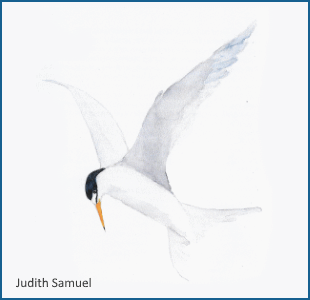
Little Terns - Gronant and Point of Ayr
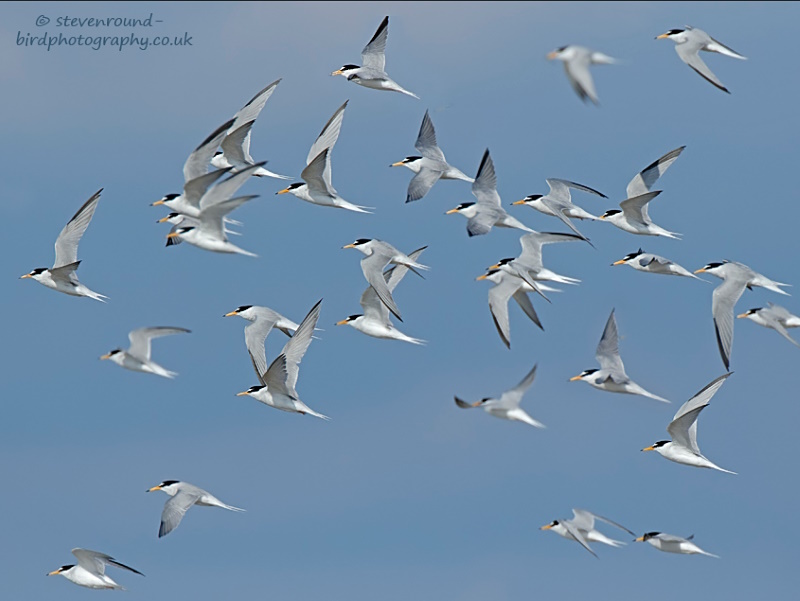
The new Little Tern season is now well
underway, so
it's time to recap on how they did in 2023. The number of pairs
breeding at Gronant increased by one from the 2022 record high, to 212.
But numbers at Point of Ayr, which also had a record season in 2022,
dropped from 34 pairs to nine so the total for the Dee Estuary was 221
- still the second highest ever.
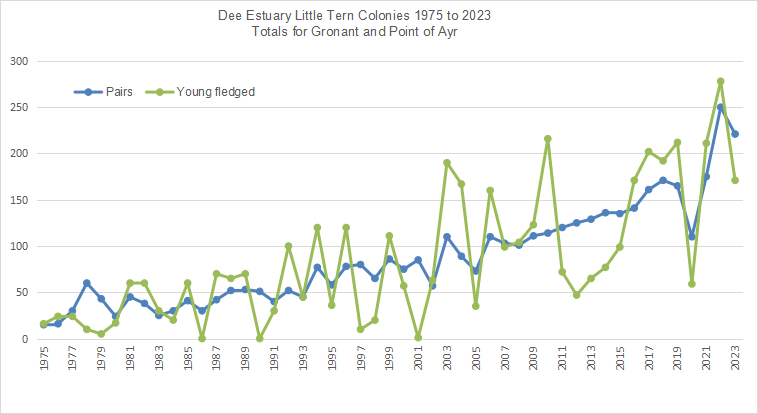
The number of fleldgelings dropped
quite
substantially from 278 in 2022 to 171 in 2023. This seems to be mainly
due to the attentions of a pair of Kestrels which visited Gronant
several times
a day between June 9th and June 18th. I know from personal experience
how difficult it is to stop a determined Kestrel and I remember the
despair in 2001, when I was wardening, when they took most of the
chicks that year - aided by a fox which managed to get into one of the
pens! However, 171 fledgelings last year was by no means a disaster and
the productivity of 0.77 (average number of fledgelings per pair) is
still more than the 0.74 which is the minimum required to maintain
numbers. The productivity at the Point of Ayr was a lot higher than at
Gronant with an average 1.78 chicks per pair. If we can solve the
problem with the kestrels (perhaps by diversionary feeding), and given
good weather, then the productivity could easily be as high at Gronant
which would result in over 370 fledglings. That would be fantastic.
Perhaps in 2024?
Voluntary Wardens Wanted
There is no doubt that these Little
Tern colonies
would not exist if it wasn't for the wardening schemes. Gronant is one
of the most successful colonies in the British Isles and you can help
maintain that succes by volunteering, either at Gronant or Point of
Ayr. This leaflet (published in 2018 so now getting a bit out of date
but mostly still relevant) explains what is involved 'Becoming
a Little Tern Volunteer Warden'. But feel free to just turn
up at
either colony and have a chat to the wardens on duty, and just look at
the Little Terns.
Or volunteer by following the links
below:
Gronant:
Click on this link to see Denbighshire Countryside Sevices page "Can
you help support Wales' largest Little Terns Colony": https://www.denbighshire.gov.uk/en/news/.........
Point
of Ayr:
contact the RSPB at Burton Mere Wetlands.
https://www.rspb.org.uk/days-out/reserves/dee-estuary-burton-mere-wetlands
Sources of Information
1. Gronant 2023 Little Tern Report
compiled by
Claudia Smith, Sam Brown and Jonny Lee, Denbighshire County Council
2023.
2. Point of Ayr Little Tern Report 2023
(contact
RSPB Burton Mere Wetlands for more info on this report).
Richard Smith
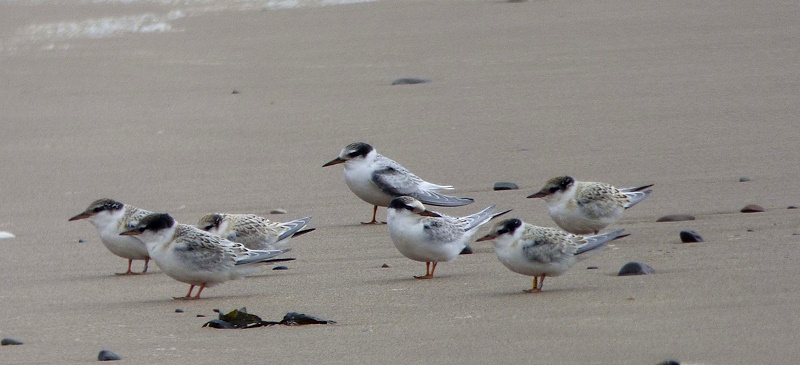
Colour Ring Report
Shelduck
Two newly ringed Shelduck were spotted
in May.
Shelducks on the shore in late spring are presumably breeding birds so
it's good to know where these birds have originated from.
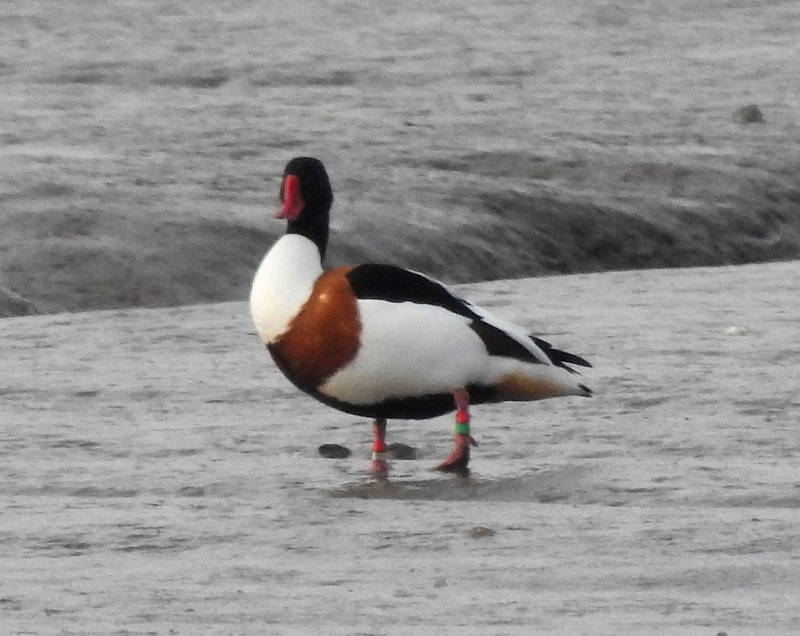
RG-Rm
Ringed at Longton Marsh, Ribble Estuary on 09/03/2024.
Recorded on Heswall Shore on 02/05/2024.
This is a new scheme undertaken by the
Preston
Wildfowlers Association.
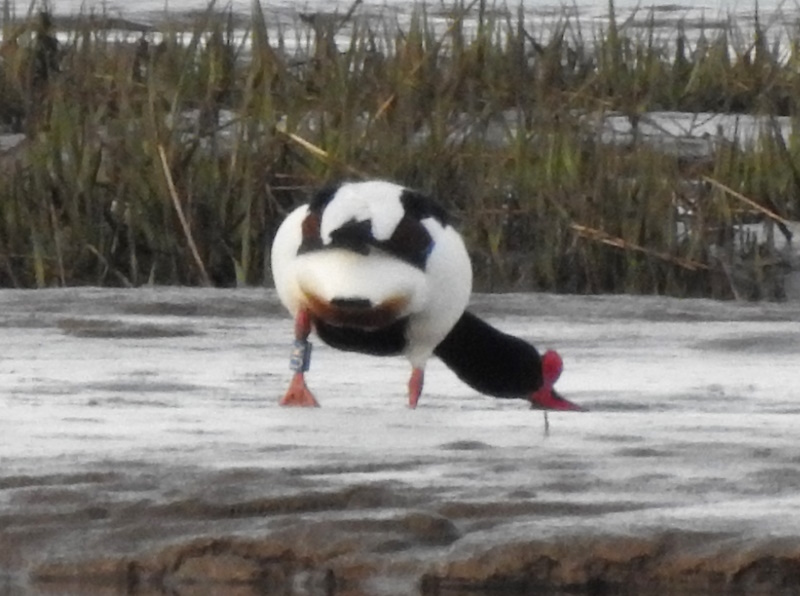
Blue
UK
Ringed at Martin Mere on 05/03/2024.
Recorded on Heswall Shore four times between 09/05/2024 and 16/05/2024.
Dunlin
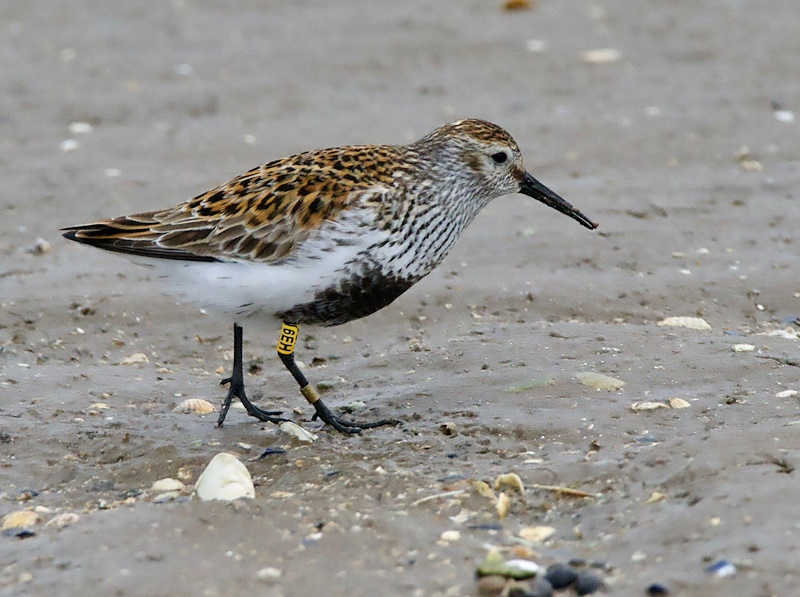
O - Y (6EH)
Ringed at Ynyslas (Cardigan Bay) on 21/09/2021.
Recorded at Hilbre on 29/04/2024.
This is our thirteenth Dunlin ringed by
the
Mid-Wales Ringing Group. Of those 13 this is only the second spring
record, with 11 recorded between July and October and one in January.
Oystercatcher
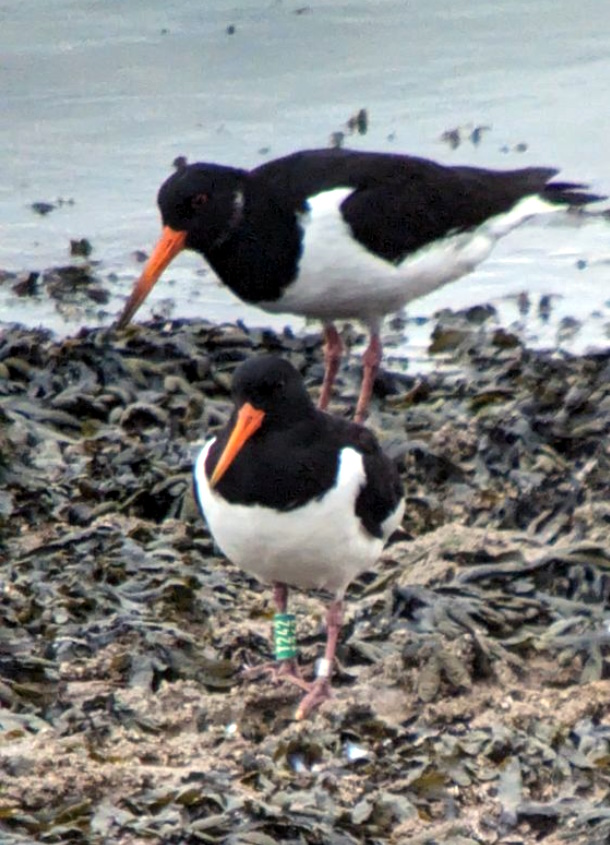
G -T242
Ringed at Bergen, Norway, on 17/06/2021 as a chick. Exact location was
in the grounds of the local IKEA!
Recorded at Heswall Shore on 29/06/2023 and at Hilbre on 04/05/2024.
Redshank
Despite being the most important site in the country for Redshanks we struggle to find colour ringed ones, so it was good to see this one with a white flag ringed by the Wash Wader Ringing Group.
O
- White flag (CCK)
Ringed at Frieston Marsh, Wash, on 11/09/2021.
Recorded:
at Port Seton on the south coast of the Firth of Forth on 11/10/2023,
then a few days later it was at Saltfleet Haven, Lincs, on 15/10/2023.
Burton Mere Wetlands on 18/04/2024.
The record in April was the first away from the east coast of the UK.
Herring Gull
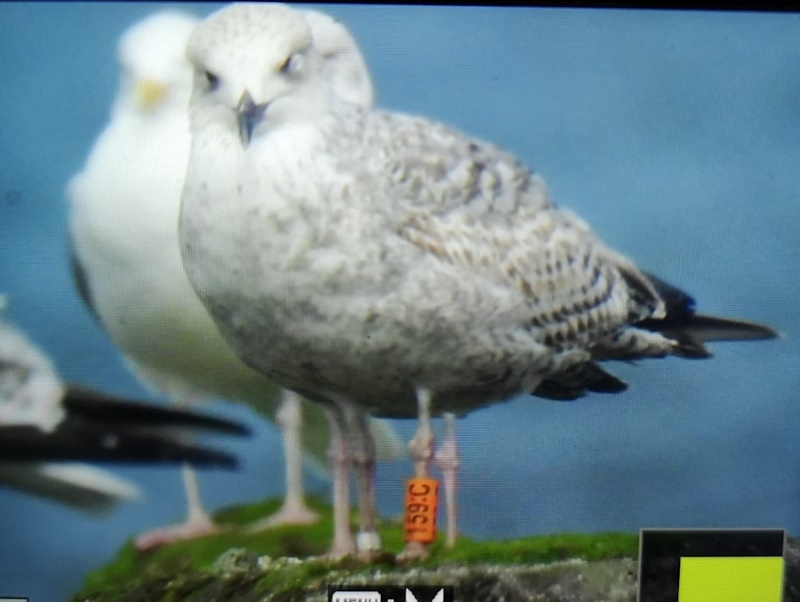
O
- 159:C
Ringed on the Old Lighthouse Island, Copeland Islands, Co. Down,
Northern Ireland in July 2023 as a chick.
Recorded six times between October 2023 and January 2024 at the Redgate
Recycling Centre at Gorton, SE Manchester.
It was at Seforth NR on 14/04/2024 and Wallasey Shore on 18/05/2024.
Black-headed Gull
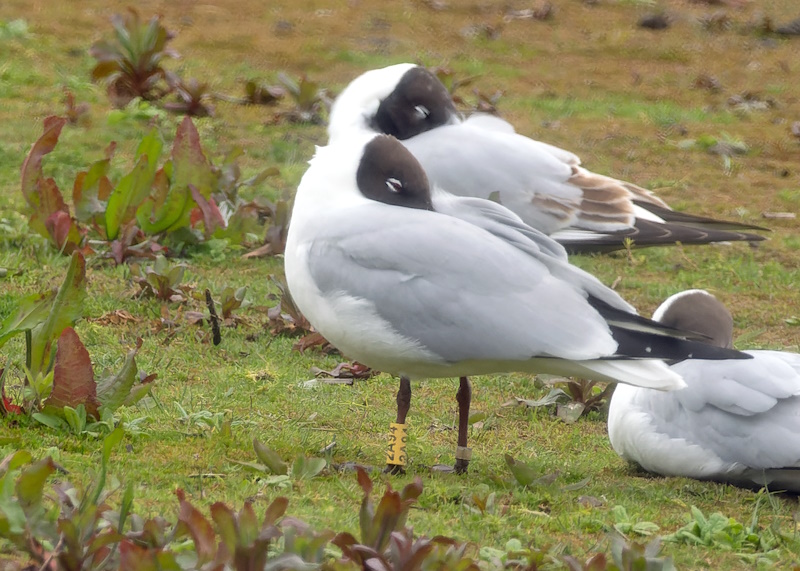
Y
- 2A94
Ringed at Fishers Green, Essex, in June 2018.
Recorded at Fleet Services (M3 motorway), Hampshire, in June 2020. It
was back at Fishers Green in June 2022 and 2023.
Recorded at Burton Mere Wetlands on 30/04/2024 and 02/05/2024.
Wheatear

Red - DTT
Ringed on the Calf of Man, Isle of Man, on 02/05/2024.
Recorded on Hilbre 03/05/2024 and 04/05/2024.
This wheatear was recorded on Hilbre just a day after it was ringed, and an unexpected movement south-east when you would expect Wheatears to be heading northwards in May. This is only the second colour ringed Wheatear seen on Hilbre, and the first was also ringed on the Calf of Man. I quote from the Hilbre Bird Observatory Blog: "It is amazing that Hilbre colour ringed Wheatears for a several years without a single sighting ever, such are the distances travelled and unihabited breeding places involving our migrant Wheatears".
Colour Rings were recorded by Richard
Smith, Stephen
Hinde, Matt Thomas, Richard du Feu, Mark Woodhead, Colin Schofield,
Sean O'Hara, Tony Ormond, Steve
Williams and Steve Round.
Richard Smith
May Bird News

Two rare raptors in May with a
Montagu's Harrier
past Leasowe on the 9th and a Honey Buzzard over Burton Mere Wetlands
on the 26th. Both seemed to be getting more frequent early on this
century but have since become much rarer. The last record for a
Montagu's over Wirral was at Moreton in April 2007 with records of
birds flying past Hilbre in 2003 and 2004. There have been several
Honey Buzzard reports over the years but most have been 'probables' and
not found their way into the Bird Reports. Acccepted records include
one at Leasowe in 2006 and two in 2008 when there was a country wide
influx, with one at New Brighton and one at Leasowe.
10 Waxwings at Saughall on the 3rd
reminded us that
summer was still several weeks away but no less than two Siberian
Chiffchaffs at Leasowe early in the month was a nice reminder that the
spring migration was still well underway, as did a lovely Blue-headed
Wagtail there on the 5th.
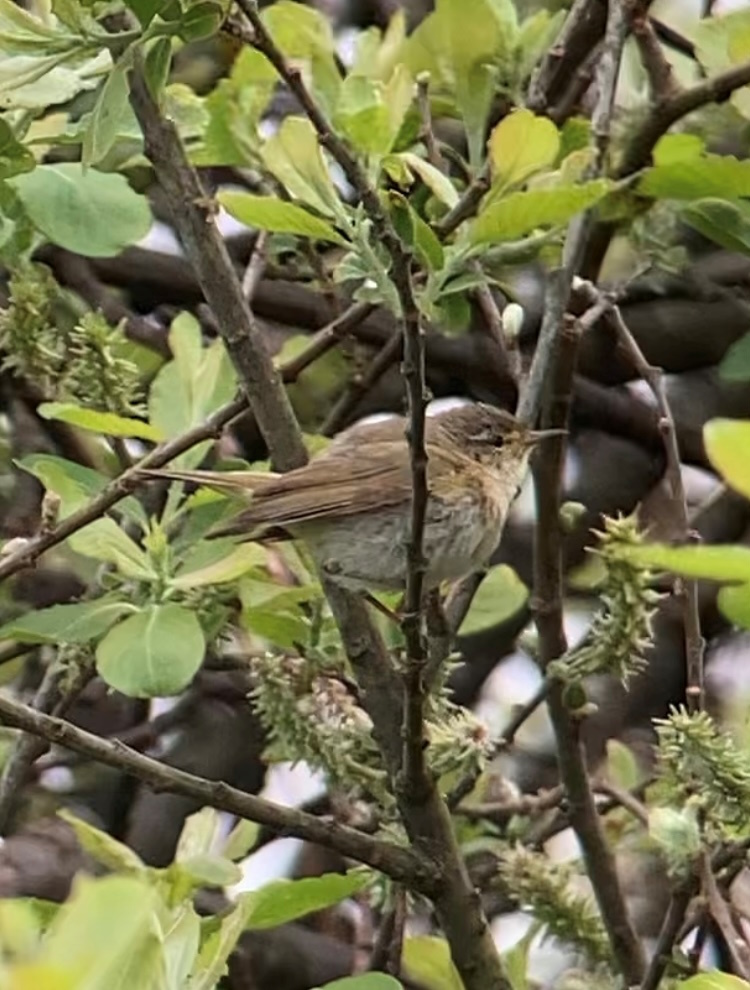
Waders were passing through all month including Whimbrels which peaked
at 147 at Heswall on the 5th with 11 still there on the 26th, and five
Curlew Sandpipers was a good total for May.

There were six reports of Short-eared Owls, with most coming from
Hilbre and the Leasowe Lighthouse areas probably indicating a couple of
birds were lingering there. There were also six reports of Ospreys,
with four of these reports coming in the second half of May this may
again suggest a single non-breeding bird wandering around the area.
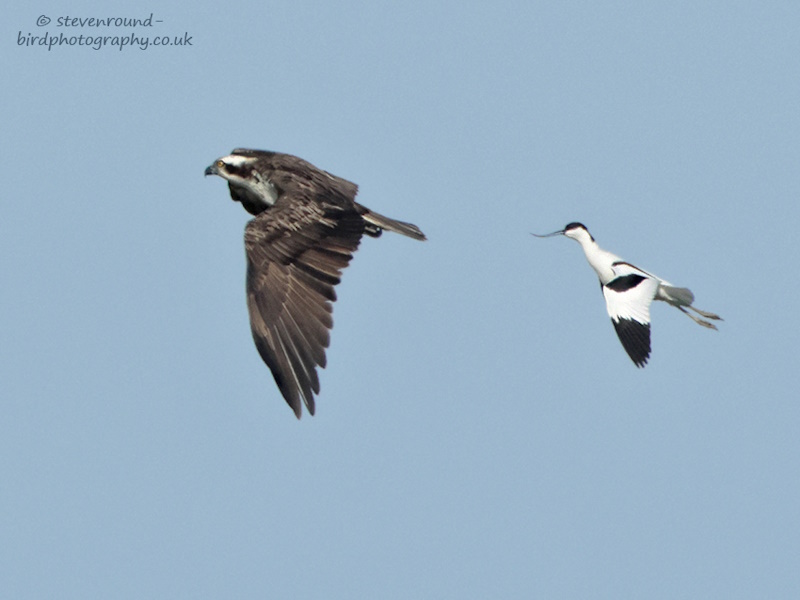
On the 6th Hilbre had two Puffins, 18 Eiders and 1 Black Guillemot, and
the were another two Puffins seen later in the month. The previous day
123 Red-throated Divers were on the sea.
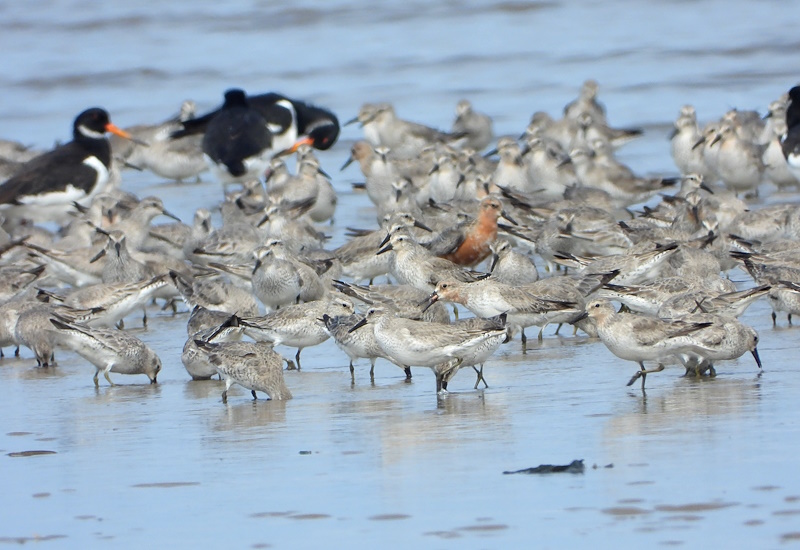
A very good breeding season in 2023
means there are
a lot of non-breeding one year old Knots in the Liverpool Bay area and
a couple of thousand visited Leasowe Shore at the end of the month.
Burton Mere Wetlands is well known for
good numbers
of Black-tailed Godwits all year round, but Bar-tailed Godwits are
scarce here and rarely make it into double-figures - but in May
numbers, all immature birds, reached an incredible 176 on the 30th so
presumably they also had a bumper breeding season in 2023.

What to expect in June
Although the quietest month of the year on the estuary I find June a
fascinating month with waders still hurrying through on their way north
early in the month, yet, as early as the third week of June, we get
birds already returning after breeding.
You may see small flocks of Sanderlings
along north
Wirral, Point of Ayr and Gronant in the first few days of June. They
will be busy feeding up before flying across the Atlantic to breed in
northern Greenland and Canada. Look in awe at these birds as they may
well have wintered on the south-west coast of Africa, meaning a journey
of at least 8,000 miles by the time they reach their breeding ground.
Knots aren't a species we would
normally expect to
see in June but several thousand non-breeding birds do spend the summer
along the Liverpool Bay coasts (mainly Formby/Ribble) and sometimes
they visit us here. Last June we had the unusual sight of 400
Knots at Burton Mere Wetlands and 150 at the Connah's Quay Reserve.
With a very good breeding season in 2023 there will be lots of
immatures and I would expect some of these to visit us this summer,
hopefully several thousand. Most Whimbrels will have arrived in Iceland
to breed during May, but we always get a handful of non-breeding birds
in June with Heswall the best place to see them.
There were a few records of Ospreys in May, perhaps a single young bird hanging around the area so it may still be here in June.
In the second half of the month birds
start to
return from breeding with the earliest waders returning being Spotted
Redshanks, Little Ringed Plovers, Wood Sandpipers and Common
Sandpipers. The fresh water sites at Burton Mere Wetlands and Connah's
Quay are best for these, but Common Sandpipers seem to be particularly
attracted to the banks of the River Dee where it flows past Connah's
Quay and
Queensferry.
The end of the month will see a notable increase in gulls and Sandwich Terns on the sand and mud banks. I always love to pick out Mediterranean Gulls among the Black-headed - looking stunning still in full breeding plumage.
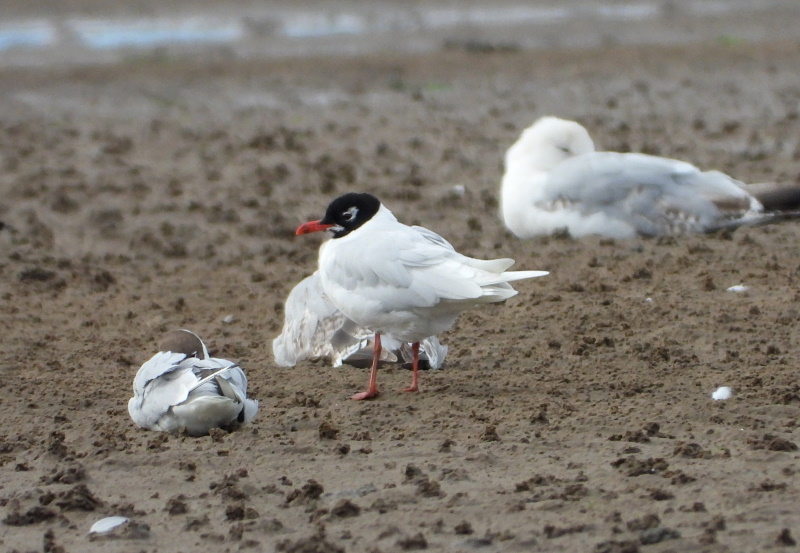
Forthcoming Events
June Highest Spring Tides (Liverpool)
Also see Tides page.
6th June, 11.36hrs (BST), 9.2m.
7th June, 12.24hrs (BST), 9.2m.
Forthcoming Events
Also see events at https://events.rspb.org.uk/deeestuary